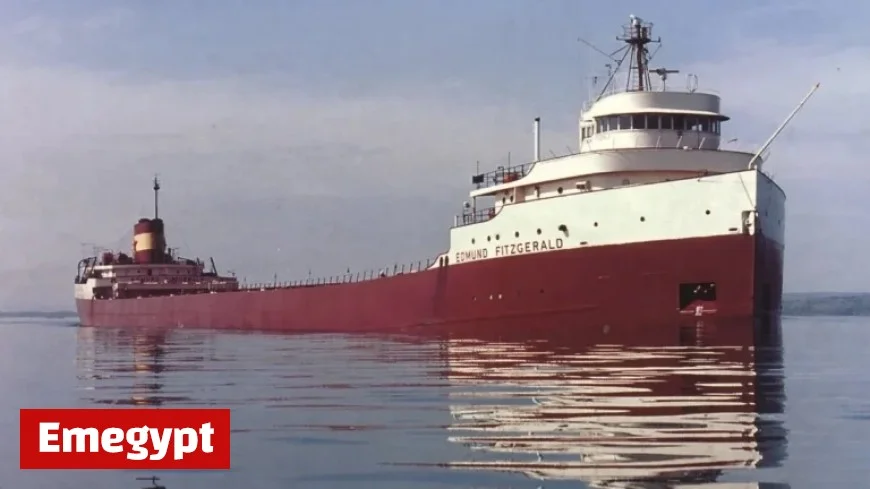Edmund Fitzgerald Shipwreck Haunts Nearly 50 Years Later

The sinking of the Edmund Fitzgerald remains a poignant chapter in maritime history nearly fifty years later. On November 10, 1975, the freighter tragically sank in Lake Superior, claiming the lives of all 29 crew members on board.
Details of the Edmund Fitzgerald Shipwreck
Once the largest vessel in North America’s Great Lakes, the SS Edmund Fitzgerald was built to transport iron ore. It set sail from Superior, Wisconsin, on November 9, 1975, loaded with approximately 26,000 tons of taconite pellets for Detroit. The ship was named after the president of the Northwestern Mutual Life Insurance Company, which owned it.
During its final voyage, a violent storm descended upon Lake Superior. The storm produced winds up to 67 mph and waves reaching 35 feet. Despite attempts to navigate to safety, the ship foundered about 17 miles from Whitefish Bay and sank in over 530 feet of water.
Investigation and Theories
Multiple theories regarding the sinking persist, with federal investigations conducted by the U.S. Coast Guard and the National Transportation Safety Board (NTSB). Both agencies pointed towards faulty hatch covers as the probable cause of catastrophic flooding within the vessel. The NTSB concluded that a sudden influx of water contributed significantly to the tragedy.
The ‘Witch of November’
The storm that led to the disaster is often referred to as the “Witch of November,” a term popularized by Canadian singer Gordon Lightfoot in his 1976 song, “The Wreck of the Edmund Fitzgerald.” This phrase describes fierce autumn storms that have historically impacted Great Lakes shipping.
November is known for volatile weather, with about 40% of shipwrecks on the Great Lakes occurring during this month. The unpredictable storms often coincide with increased shipping activity, as cargo must reach markets before winter sets in.
Legacy and Commemoration
In the decades since the shipwreck, the legacy of the Edmund Fitzgerald has grown. Expeditions to locate and document the wreck began shortly after its sinking. In 2006, the Canadian government designated it a protected marine archaeological site, making it illegal to dive there without permission.
Lightfoot’s song brought international attention to the tragedy, reaching number one on Canadian charts and number two on the U.S. Billboard Hot 100. Lightfoot himself described it as his finest work before passing away in 2023.
Statistics and Historical Context
- Date of sinking: November 10, 1975
- Casualties: 29 crew members
- Cargo at sinking: 26,000 tons of taconite pellets
- Location: About 17 miles from Whitefish Bay in Lake Superior
- Storm characteristics: Winds of 67 mph, waves up to 35 feet
- Shipwrecks in Great Lakes history: Approximately 10,000 shipwrecks and 30,000 fatalities over 300 years
The Edmund Fitzgerald’s story continues to resonate in maritime history, symbolizing the perilous nexus of nature and human endeavor. It serves as a reminder of the unpredictable power of the Great Lakes and the destinies that can be altered in an instant.






























